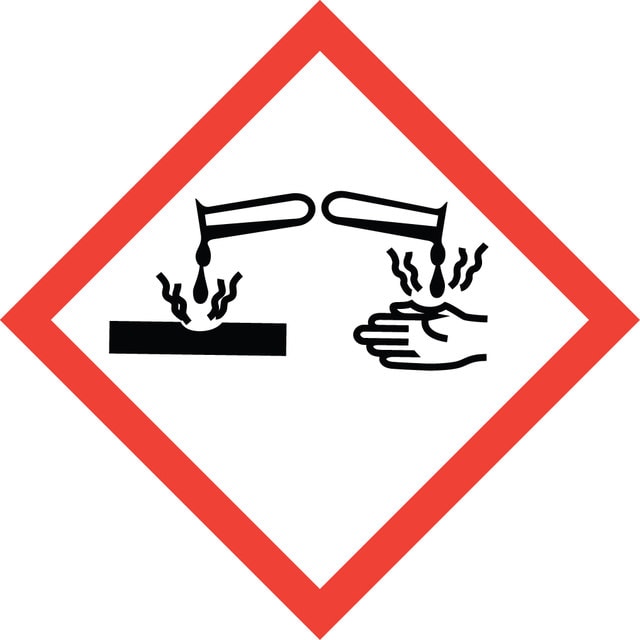Sign In to View Organizational & Contract Pricing.
Select a Size
About This Item
Linear Formula:
CH3COCH2CH2COOH
CAS Number:
Molecular Weight:
116.12
UNSPSC Code:
12352100
NACRES:
NA.22
PubChem Substance ID:
EC Number:
204-649-2
Beilstein/REAXYS Number:
506796
MDL number:
Product Name
Levulinic acid, 98%
InChI key
JOOXCMJARBKPKM-UHFFFAOYSA-N
InChI
1S/C5H8O3/c1-4(6)2-3-5(7)8/h2-3H2,1H3,(H,7,8)
SMILES string
CC(=O)CCC(O)=O
vapor pressure
1 mmHg ( 102 °C)
assay
98%
bp
245-246 °C (lit.)
mp
30-33 °C (lit.)
density
1.134 g/mL at 25 °C (lit.)
Quality Level
Looking for similar products? Visit Product Comparison Guide
Related Categories
Application
Levulinic acid is a precursor for the synthesis of useful intermediates such as γ-valerolactone, ethyl levulinate, pentanoic acid and 2-methyl-tetrahydrofuran. Derivatization and esterification of levulinic acid results in potential biofuels.
It can also be used in:
It can also be used in:
- The preparation of catalytic composite to synthesize 5-hydroxymethylfurfural and furfural.
- The synthesis of a commercial fragrance, fraistone.
- The synthesis of pyrrolidone derivatives via reductive amination.
- The total synthesis of mycobacterial arabinogalactan.
signalword
Danger
hcodes
Hazard Classifications
Acute Tox. 4 Oral - Eye Dam. 1 - Skin Sens. 1
Storage Class
13 - Non Combustible Solids
wgk
WGK 2
flash_point_f
208.4 °F - closed cup
flash_point_c
98 °C - closed cup
ppe
dust mask type N95 (US), Eyeshields, Gloves
Choose from one of the most recent versions:
Already Own This Product?
Find documentation for the products that you have recently purchased in the Document Library.
Conversion of biomass platform molecules into fuel additives and liquid hydrocarbon fuels.
Climent MJ, et al.
Green Chemistry, 16(2), 516-547 (2014)
Levulinic Acid as a Catalyst for the Production of 5?Hydroxymethylfurfural and Furfural from Lignocellulose Biomass.
Seemala B, et al.
ChemCatChem, 8(3), 640-647 (2016)
Total synthesis of mycobacterial arabinogalactan containing 92 monosaccharide units.
Wu Y, et al.
Nature Communications, 8, 14851-14851 (2017)
Hydrodeoxygenation activity of W modified Ni/H-ZSM-5 catalyst for single step conversion of levulinic acid to pentanoic acid: An insight on the reaction mechanism and structure activity relationship.
Velisoju VK, et al.
Applied Catalysis, 550, 142-150 (2018)
Catalytic transformation of lignocellulose into chemicals and fuel products in ionic liquids.
Zhang Z, et al.
Chemical Reviews, 117(10), 6834-6880 (2016)
Our team of scientists has experience in all areas of research including Life Science, Material Science, Chemical Synthesis, Chromatography, Analytical and many others.
Contact Technical Service
